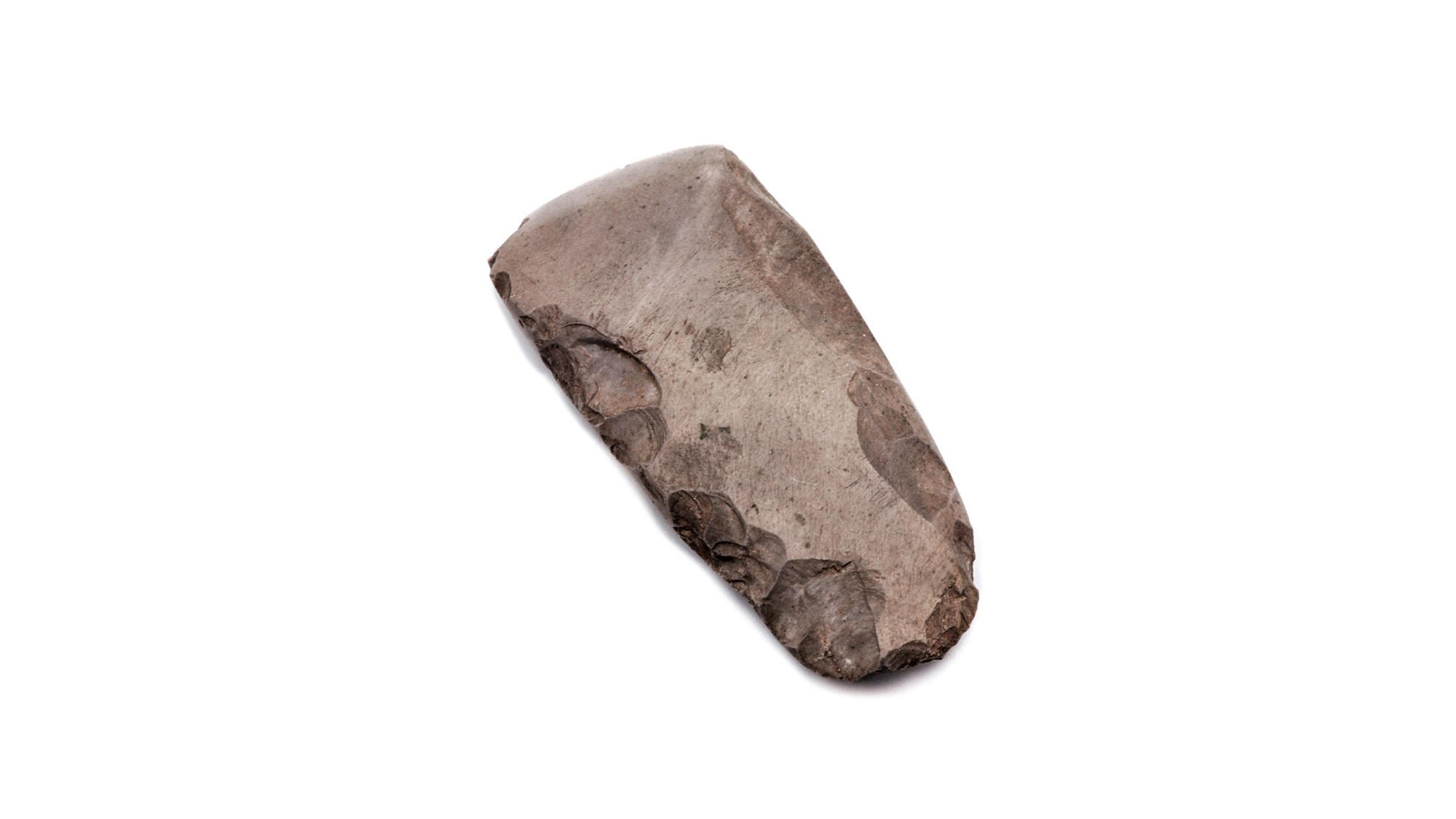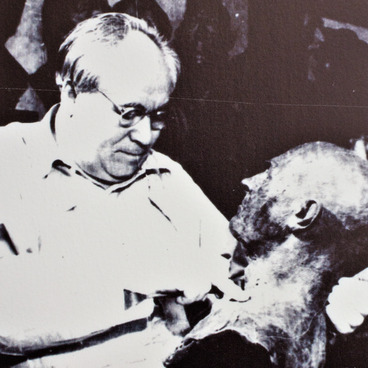The adze is a stone or metal tool used to woodworking. It resembled an axe, but the main difference was that the axe had the cutting edge parallel to the handle, while the adze’s edge was mounted perpendicularly.
In Siberia the adze appeared during the Neolithic and Bronze Age, 7500-4600 years ago. Scientists have assumed that at this time people began to master waterways and travel along rivers. They could make boats and rafts with the help of an adze. In addition, the tool was also used in ritual rites: along with axes, they were placed in the graves of the deceased. This tradition was especially widespread in Southeast Asian cultures.
The adze from the collection of the Regional Museum of Local History was found at the excavation of the “Lokomotiv” Early Neolithic Cemetery in Irkutsk. This ancient burial ground was discovered in 1928, during the construction of a playground next to the stadium “Cyclodrom” (now — “Lokomotiv”). When workers began to dig a hole to install a swing, they saw a recess where the walls were painted red. Irkutsk archaeologists Mikhail Gerasimov and Bernhard Petri were called to the site and determined that before them was a burial ground of the Neolithic era, which was about 4600-7500 years old.
Inside the burial ground, archaeologists found skeletons and funerary artifacts — the items that were thought to be needed in the afterlife, for example, jewelry, weapons, and tools, including the adzes. Based on the funerary objects it could be determined to which culture the deceased belonged and how old they were. Scholars have even tried to understand what status they might have had within the tribe.
There were no burial grounds in the Paleolithic era (40000-12000 years ago) were, and probably the first burials were made directly within the settlements. Separate cemeteries outside inhabited territories emerged during the Mesolithic period, about 8-10 thousand years ago. Scientists are now studying the burial grounds to get an idea of how the material culture, the everyday life, the production and economic systems of that era looked like. And also — how family and social relations were built by the indigenous population of Siberia.
In Siberia the adze appeared during the Neolithic and Bronze Age, 7500-4600 years ago. Scientists have assumed that at this time people began to master waterways and travel along rivers. They could make boats and rafts with the help of an adze. In addition, the tool was also used in ritual rites: along with axes, they were placed in the graves of the deceased. This tradition was especially widespread in Southeast Asian cultures.
The adze from the collection of the Regional Museum of Local History was found at the excavation of the “Lokomotiv” Early Neolithic Cemetery in Irkutsk. This ancient burial ground was discovered in 1928, during the construction of a playground next to the stadium “Cyclodrom” (now — “Lokomotiv”). When workers began to dig a hole to install a swing, they saw a recess where the walls were painted red. Irkutsk archaeologists Mikhail Gerasimov and Bernhard Petri were called to the site and determined that before them was a burial ground of the Neolithic era, which was about 4600-7500 years old.
Inside the burial ground, archaeologists found skeletons and funerary artifacts — the items that were thought to be needed in the afterlife, for example, jewelry, weapons, and tools, including the adzes. Based on the funerary objects it could be determined to which culture the deceased belonged and how old they were. Scholars have even tried to understand what status they might have had within the tribe.
There were no burial grounds in the Paleolithic era (40000-12000 years ago) were, and probably the first burials were made directly within the settlements. Separate cemeteries outside inhabited territories emerged during the Mesolithic period, about 8-10 thousand years ago. Scientists are now studying the burial grounds to get an idea of how the material culture, the everyday life, the production and economic systems of that era looked like. And also — how family and social relations were built by the indigenous population of Siberia.



